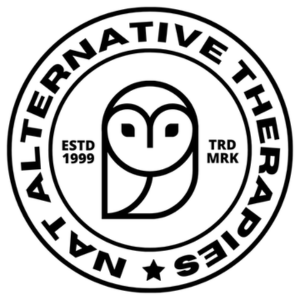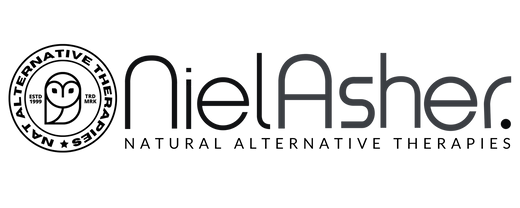Unlocking Relief: The Role of the Quadratus Lumborum in Back Pain and How to Treat Trigger Points
The Quadratus Lumborum (QL) muscle is a key player in maintaining the stability and movement of the lower back and pelvis
Despite its relatively small size, the QL muscle can have a significant impact on a person’s comfort and mobility, particularly when it becomes tight or harbors trigger points. In this comprehensive blog, we will explore the anatomy and function of the QL muscle, its role in back pain, and how trigger point therapy can be an effective solution for alleviating discomfort and restoring function.
Anatomy and Function of the Quadratus Lumborum Muscle
The Quadratus Lumborum is a deep muscle located in the lower back, forming part of the posterior abdominal wall. It spans from the iliac crest of the pelvis to the 12th rib and the transverse processes of the first four lumbar vertebrae (L1-L4). The QL muscle has several important functions:
-
Lateral Flexion of the Spine: The QL is primarily responsible for lateral flexion, or side bending, of the spine. When one side of the QL contracts, it pulls the spine towards that side, allowing the trunk to bend laterally.
-
Stabilization of the Pelvis and Lumbar Spine: The QL plays a crucial role in stabilizing the pelvis and lumbar spine, particularly during movements such as walking, standing, and lifting. It helps maintain proper posture and alignment by preventing excessive tilting of the pelvis.
-
Elevation of the Hip: The QL can also contribute to the elevation of the hip, an action commonly referred to as "hip hiking." This movement is particularly important during activities like walking or climbing stairs, where one leg needs to be lifted higher than the other.
-
Assistance in Breathing: During deep inhalation, the QL helps stabilize the 12th rib, providing support for the diaphragm’s movement. This function becomes particularly relevant during physical exertion or activities that require deep breathing.

The QL Muscle’s Role in Back Pain
The Quadratus Lumborum is often implicated in cases of lower back pain, particularly when it becomes tight, overworked, or develops trigger points. Several factors can contribute to QL-related back pain:
-
Muscle Imbalances: Muscle imbalances in the core and lower back can place undue stress on the QL muscle. For example, weak abdominal muscles or tight hip flexors can cause the QL to overcompensate, leading to tightness and pain.
-
Poor Posture: Prolonged sitting, particularly in poor posture, can cause the QL muscle to become chronically shortened and tight. This is common in people who spend long hours sitting at a desk or driving.
-
Repetitive Strain: Repetitive movements or activities that involve frequent bending, lifting, or twisting can strain the QL muscle, leading to overuse and the development of trigger points.
-
Leg Length Discrepancy: A difference in leg length can cause one side of the pelvis to sit higher than the other, placing additional stress on the QL muscle and leading to pain and discomfort.
-
Acute Injuries: Sudden movements, falls, or trauma can cause the QL muscle to become injured, leading to acute pain and muscle spasm.
When the QL muscle becomes tight or harbors trigger points, it can refer pain to various areas of the body. Common symptoms of QL-related pain include:
-
Lower Back Pain: The most common symptom of QL dysfunction is pain in the lower back, often on one side. This pain may be dull and achy or sharp and stabbing, depending on the severity of the trigger points.
-
Hip Pain: Trigger points in the QL can refer pain to the hip, leading to discomfort in the lateral hip or groin area.
-
Buttock Pain: Some individuals with QL trigger points may experience pain that radiates into the buttock, mimicking the symptoms of sciatica.
-
Pain During Movement: Pain from QL trigger points often becomes more pronounced during certain movements, such as bending to the side, twisting, or lifting. This can make everyday activities, such as getting out of bed or picking up objects, particularly uncomfortable.
Understanding Trigger Points in the Quadratus Lumborum
Trigger points are hyperirritable spots within a muscle that can cause pain, tension, and restricted movement. In the case of the QL muscle, trigger points are often a result of muscle overuse, strain, or injury. These trigger points can develop in any part of the QL muscle, but they are commonly found in the lower portion of the muscle, near the iliac crest, and in the upper portion, near the 12th rib.
When pressure is applied to these trigger points, they can cause localized pain as well as referred pain to other areas, such as the lower back, hip, or buttock. Trigger points can also contribute to muscle stiffness and a feeling of tightness in the lower back, making it difficult to move freely.
Trigger Point Therapy for the Quadratus Lumborum
Trigger point therapy is a highly effective treatment for alleviating pain and dysfunction in the QL muscle. This therapy involves identifying and releasing the trigger points through various techniques, including ischemic compression, massage, stretching, the application of heat or cold, and dry needling. Here’s how these techniques can be used to treat QL trigger points:
1. Ischemic Compression:
Ischemic compression involves applying sustained pressure directly to the trigger point. This pressure temporarily reduces blood flow to the area, which may cause some discomfort, but it helps to release the tight muscle fibers and reduce pain. After the pressure is released, fresh blood rushes into the area, bringing oxygen and nutrients that promote healing. Ischemic compression is typically performed by a trained therapist, but self-treatment can also be effective using tools like a tennis ball or massage cane.
2. Massage Therapy:
Massage therapy can help reduce muscle tension, improve blood circulation, and release trigger points in the QL muscle. Techniques such as deep tissue massage, myofascial release, and cross-fiber friction can be particularly effective in treating QL trigger points. A skilled massage therapist can identify the specific trigger points in the QL and apply targeted pressure to release them, providing relief from pain and improving mobility.
3. Heat and Cold Therapy:
The application of heat or cold can be beneficial in managing trigger points in the QL muscle. Heat therapy, such as a warm compress or heating pad, helps relax the muscle and increase blood flow, making it easier to release trigger points. Cold therapy, such as an ice pack, can help reduce inflammation and numb pain, particularly after an acute injury or flare-up. Alternating between heat and cold can also be an effective way to manage pain and promote healing.
4. Stretching:
Stretching is an essential component of trigger point therapy for the QL muscle. Gentle stretches help lengthen the muscle fibers, reduce tightness, and prevent the recurrence of trigger points. A common stretch for the QL involves standing with feet shoulder-width apart, raising one arm overhead, and bending to the opposite side, feeling the stretch along the side of the lower back. This stretch can be performed several times a day to maintain flexibility and reduce tension in the QL muscle.
5. Dry Needling:
Dry needling is a technique that involves inserting a fine, sterile needle directly into the trigger point in the QL muscle. This method is designed to stimulate a twitch response in the muscle, which helps to release the tight fibers and reduce pain. Dry needling can also promote blood flow and trigger the body’s natural healing processes, making it an effective treatment for persistent or hard-to-reach trigger points. A qualified healthcare professional, such as a physical therapist or osteopath, should perform dry needling to ensure safety and effectiveness.
6. Strengthening and Posture Correction:
In addition to trigger point therapy, strengthening the muscles surrounding the QL, such as the abdominals, glutes, and hip flexors, can help support the lower back and prevent further strain on the QL muscle. Correcting poor posture and practicing proper body mechanics during activities like lifting or sitting can also reduce the risk of developing trigger points in the future.
Conclusion
The Quadratus Lumborum is a vital muscle that plays a significant role in the stability and movement of the lower back and pelvis. When this muscle becomes tight or develops trigger points, it can lead to significant discomfort and pain, affecting a person’s ability to move and perform everyday activities. Understanding the anatomy and function of the QL muscle, as well as the common causes of QL-related pain, is essential for effective treatment and prevention.
Trigger point therapy offers a powerful solution for alleviating pain and restoring function in the QL muscle. By incorporating techniques such as ischemic compression, massage, heat and cold therapy, stretching, and dry needling, individuals can effectively manage and prevent trigger points in the QL, leading to improved mobility, reduced pain, and a better quality of life.
If you’re experiencing lower back pain that you suspect may be related to the QL muscle, consider seeking the help of a qualified healthcare provider or massage therapist who can assess your condition and develop a tailored treatment plan that includes trigger point therapy. With the right approach, you can achieve relief from pain and enjoy greater comfort and mobility in your daily life.
References
- Bron, C., & Dommerholt, J. (2012). Etiology of myofascial trigger points. Current Pain and Headache Reports, 16(5), 439-444.
- Simons, D. G., Travell, J. G., & Simons, L. S. (1999).

The Gold Standard in Continuing Education and Online Training
Massage Therapy, Sports Massage, Strength and Conditioning, Stretching, Mobilisation and Manipulation, Cranio-Sacral Therapy, IMS Dry Needling, Acupuncture, Acupressure, Trigger Point Therapy, IASTM, Resistance Training, Bowen Therapy, Vestibular Rehabilitation Therapy, Podiatry, Oncology Massage, Sports Nutrition, Traditional Chinese Medicine, Somatic Therapy, Prenatal Bodywork and Massage, Anatomy, Biomechanics, Clinical Reasoning, Pilates, and Yoga.



















